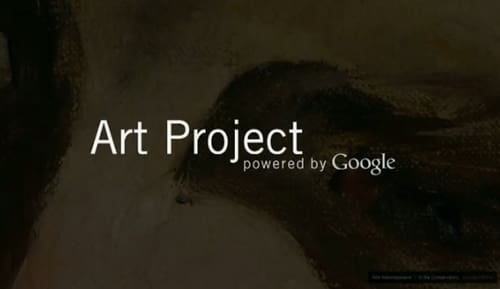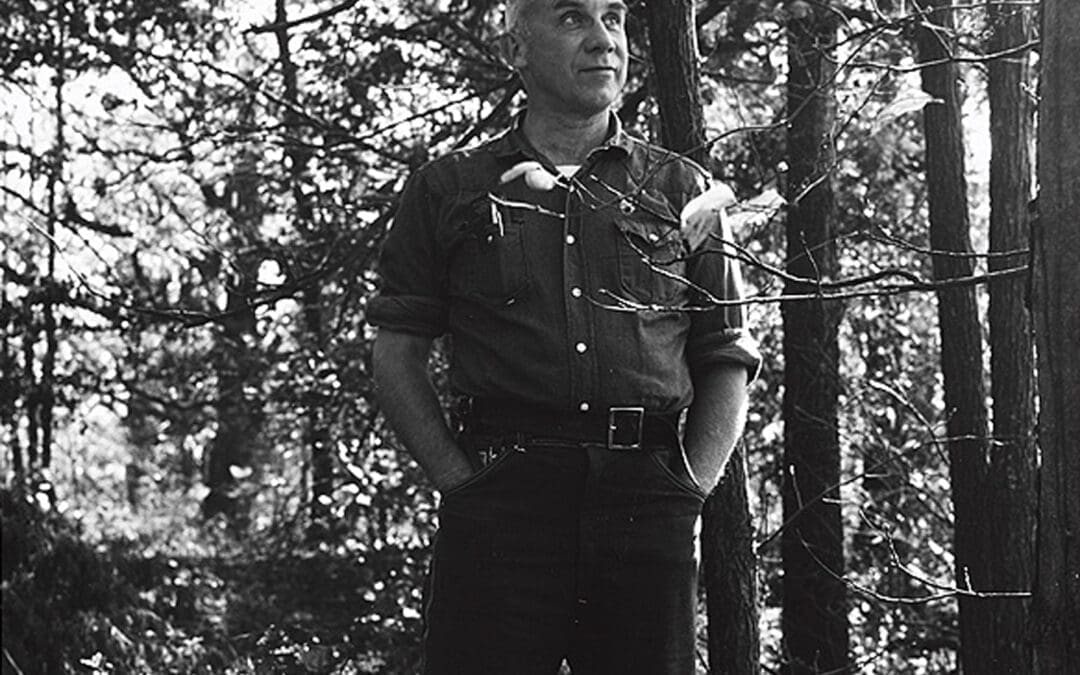Google’s stated mission is “Organizing the world’s information,” certainly one of the loftier (and simpler) mission statements I’ve heard. And considering the very young age of the Internet, I’d say they’re doing a pretty decent job of it. But I have misgivings about one of Google’s recent forays—making great works of art available to the masses, via the Art Project Powered by Google.
Although I am, of course, in favour of bringing great art to the masses—who’s not?—I have a fundamental beef with Google’s quest to do it online. And I’ll just put it right out there: online art is not the art the artist intends for you to experience (unless, perhaps, the artist in question works in digital media).
Google’s mission statement gives the game away: art is not, except at the most basic level, information. A painting is (usually) strokes on a canvas, but I argue that unless you can experience the strokes, you can’t really experience the painting. (I’ll mostly refer to painting here, but the same case could be made for sculpture, ceramics, or any art form that is not electronic to begin with.)
Googleytes will argue that the works on display in the Art Project are scanned at absurdly high resolution by absurdly accurate cameras and colour corrected for absolute fidelity to the original—that every brushstroke is available for close inspection under optimum lighting. To which I say: Good job, but not good enough. Because even though I can zoom in on the individual brushstrokes on the Rembrandt’s “Return of the Prodigal Son,” I can’t have the same experience of the work as if I was standing before it in a museum.
In a show of technical virtuosity, the works in the Art Project are displayed in a virtual museum, as though Google’s Street View car had driven through the halls of the Whitney. This allows you to “tour” the museum before you pause before the highlighted masterworks to examine them in high resolution detail. This feat of programming only underscores, for me, the futility inherent in the Art Project.
Some will plead that not everyone can travel to St. Petersburg to see the works in the Hermitage. Indeed, I have not been to that particular museum myself. But I would counter that the Prado is as much a part of the experience of Picasso’s Guernica as the painting itself, just as the Louvre is to the Mona Lisa. Not to say that paintings never change contexts—they do—but the context is still part of the experience. And the Street View version of a museum is to a real museum as, well, Street View is to an actual street: fuzzy, disorienting, and frozen in time.
What the Google Art Project assumes is that the great masterworks of world art can be reduced to information in the same way that all the world’s books can be scanned and indexed (another ambitious Google project to which I have no objection). For while a book is (illuminated manuscripts excepted) a somewhat fungible work that does not lose its essence when translated to bits and bytes, I assert that a non-digital work of art allows us no such liberty. They can be represented digitally, certainly, and such representation may be useful for art history classes and liquor advertisements, but Google’s virtual museum is, in my view, a non-starter. At worst, it encourages people to think they have “seen the Rembrandt” in the same way that Disney’s Epcot park enables its visitors to think they have seen Paris.
Have you ever seen a film or video of a dance performance? Wasn’t it just awful? Dance is another medium that does not lend itself to mediation: either you were there or you weren’t. Either you experienced it first hand or not at all. I’m not going to make the Luddite assertion that cinema is not an art form because it’s recorded—that argument is long over. But I will say that even a good film of a good play (say, Branagh’s Much Ado About Nothing) is no match for seeing the play performed in a theatre. Live performance has an energy that even a very good filmmaker cannot capture.
One might ask, what about Comment’s own online art show, the “1,000 Words” selection that was until recently part of its weekly online offering? It should be clear by now that I was not involved in curating that part of the site, which found me often hungering to see the real work instead of an 800 pixel facsimile.
So is representation always out of bounds? I hope not. I love the work of Maxfield Parrish—though I’ve never seen any of it firsthand. Is my affection for his work inauthentic for being second hand? Parrish was the opposite of an experiential purist—he licensed his work promiscuously for lithographic reproduction—and as a result became hugely popular and relatively wealthy. So it is unlikely that he would have a problem with my vicarious admiration of his painting. And I hope someday to be transported by a Parrish in person.
On the other hand, artist Robert Irwin forbade his work to be reproduced at all—in print, online, even in gallery catalogues. And he admits that such a prohibition hurt his chances of commercial success—there are no Robert Irwin posters on dorm room walls, because he prohibited photography of his work. Irwin contended that a photograph “could capture everything that the work was not about (which is to say its image) and nothing that it was about (which is to say its presence).”
But between Irwin and Parrish, I am more sympathetic to the former. Not that we shouldn’t be allowed to have posters of great paintings, but that the artist should be allowed, to a certain extent, to dictate the circumstances, and especially the media, through which his or her work is viewed—which, in the end, both Irwin and Parrish did. Further, I think Irwin’s distinction between image and presence is a useful one.
We easily make this distinction in other realms. While a photo of a sweetheart is a pleasant cell phone background, it is clearly no substitute for the presence of the loved one. One might hold up the wallpaper for another to see and say “this is my boyfriend,” but that claim would be understood in its context. No one would mistake the pixels for the person.
But in art, we miss this distinction all the time. If we have seen Rembrandt’s “Return of the Prodigal Son” in a washed out, pixelated projection in Art History class, we think we have seen it. But we have surely not, as Henri Nouwen observes in his wonderful book Return of the Prodigal Son: A Story of Homecoming. Nouwen spent hours, even days, meditating on the painting at the Hermitage, and found the experience transformative, while seeing reproductions of it had been merely informative.
And this is where the Art Project both has and lacks merit. If we acknowledge that the works represented online are informative, that we can explore them at our leisure for whatever information a high-resolution scan can disclose, then we can agree the Art Project is sort of worth it. But I think that if we expect to be transformed by these works as Nouwen was by the Rembrandt “Prodigal,” we will be disappointed. Art that transforms (here again, I’ll exclude both texts and electronic originals) ought to be experienced in person. Digital representation of art is no more the thing itself than pornography is lovemaking. And in our increasingly virtual world, we must still make distinctions between the thing itself and its digital representation. Art seems as good a place as any to hold tightly to that distinction.


